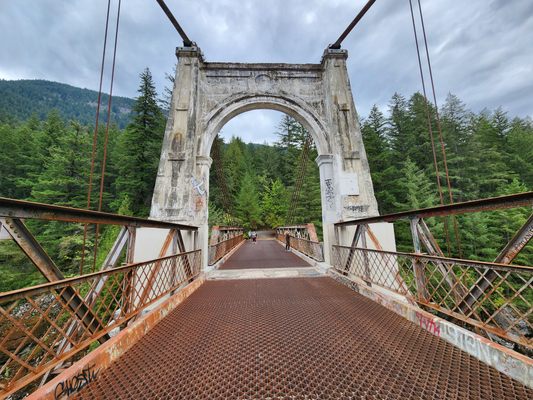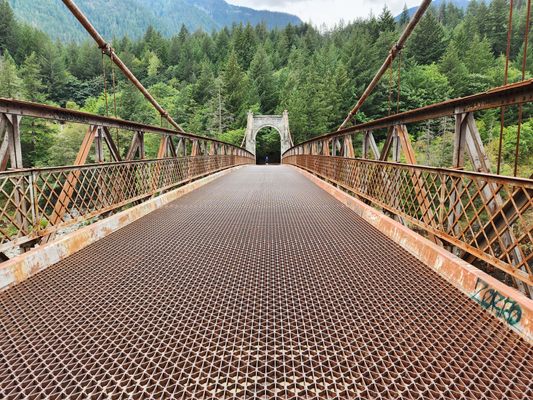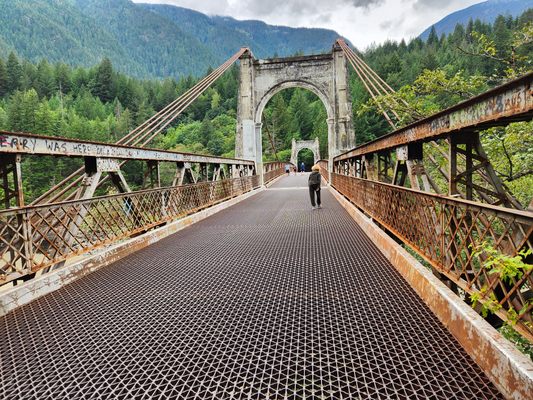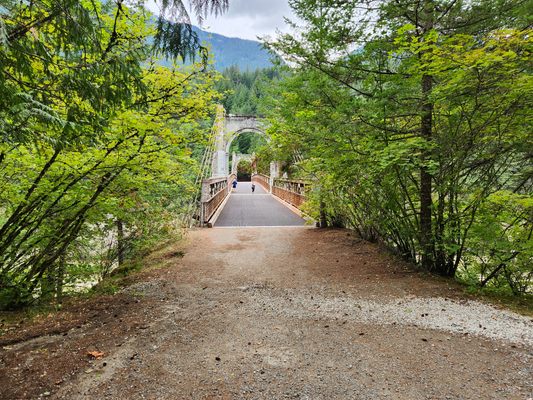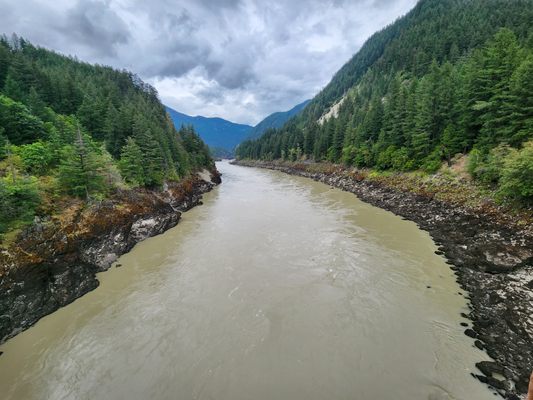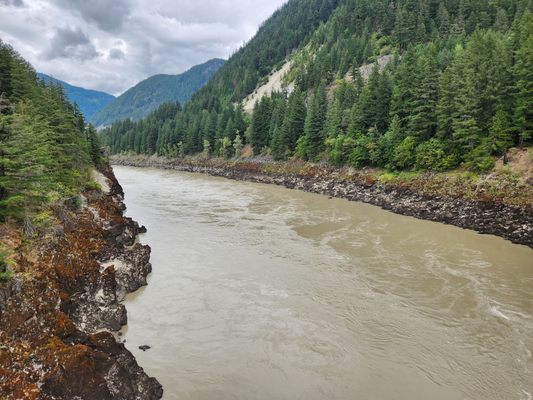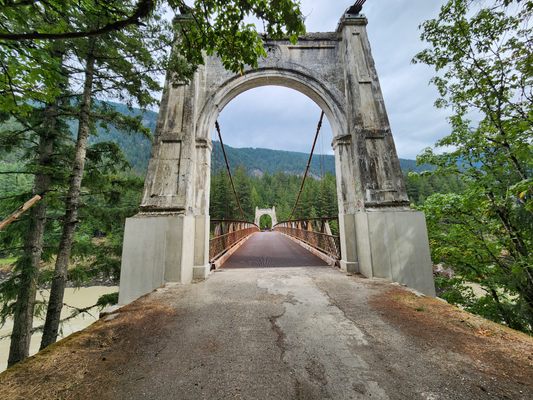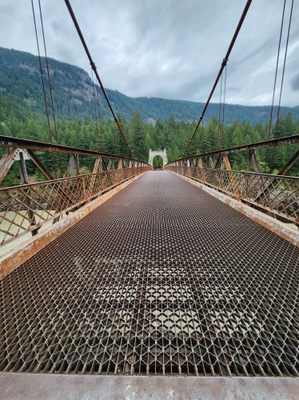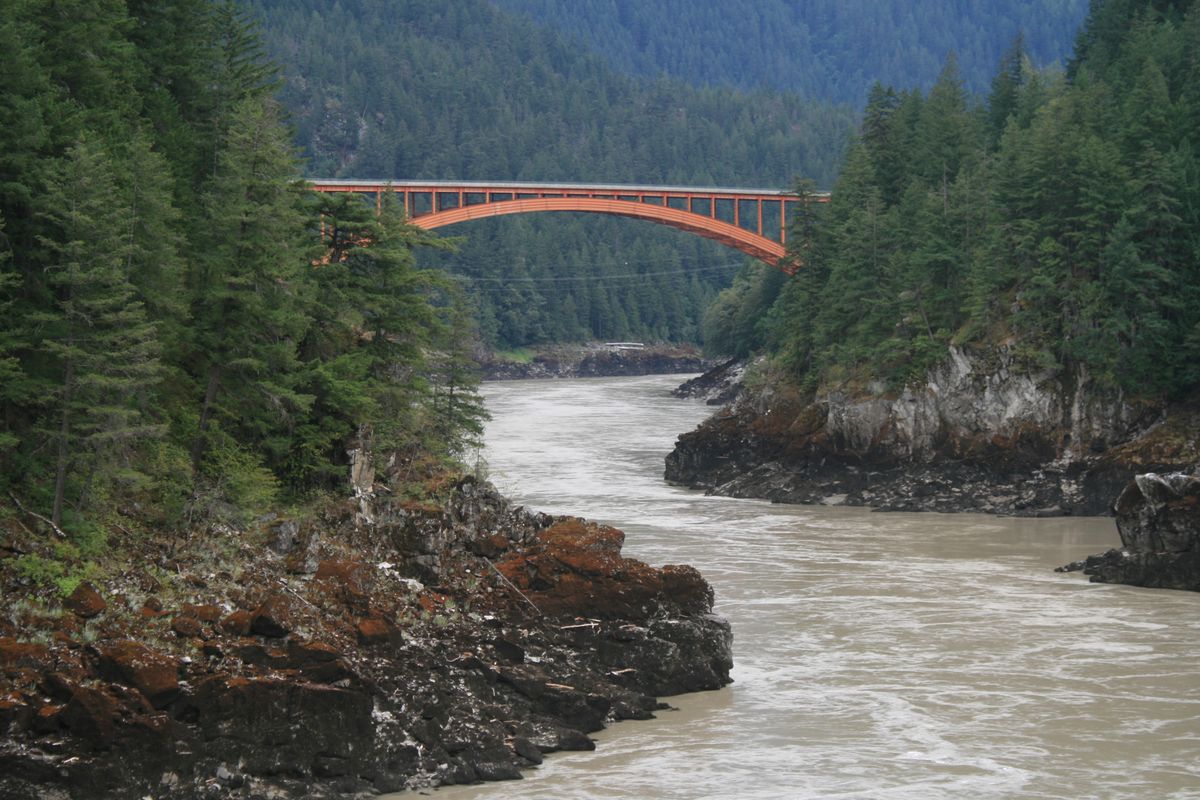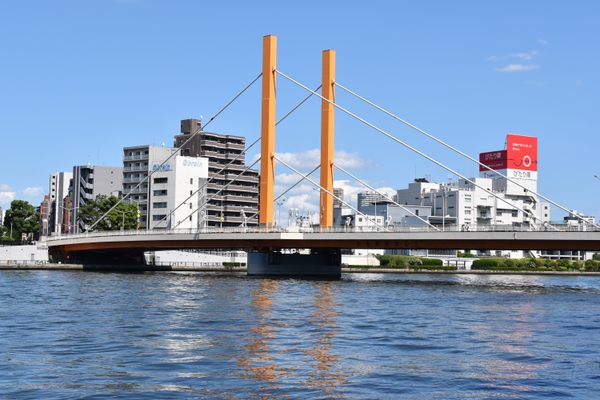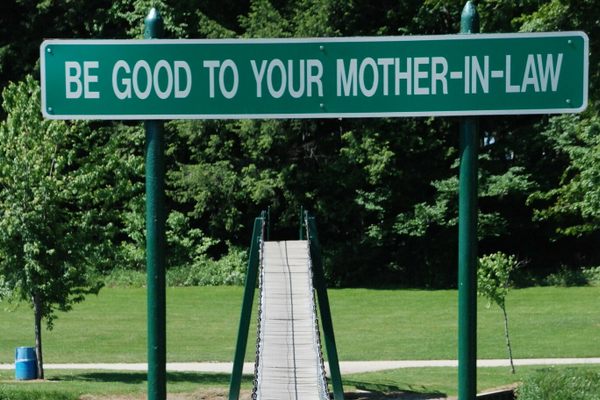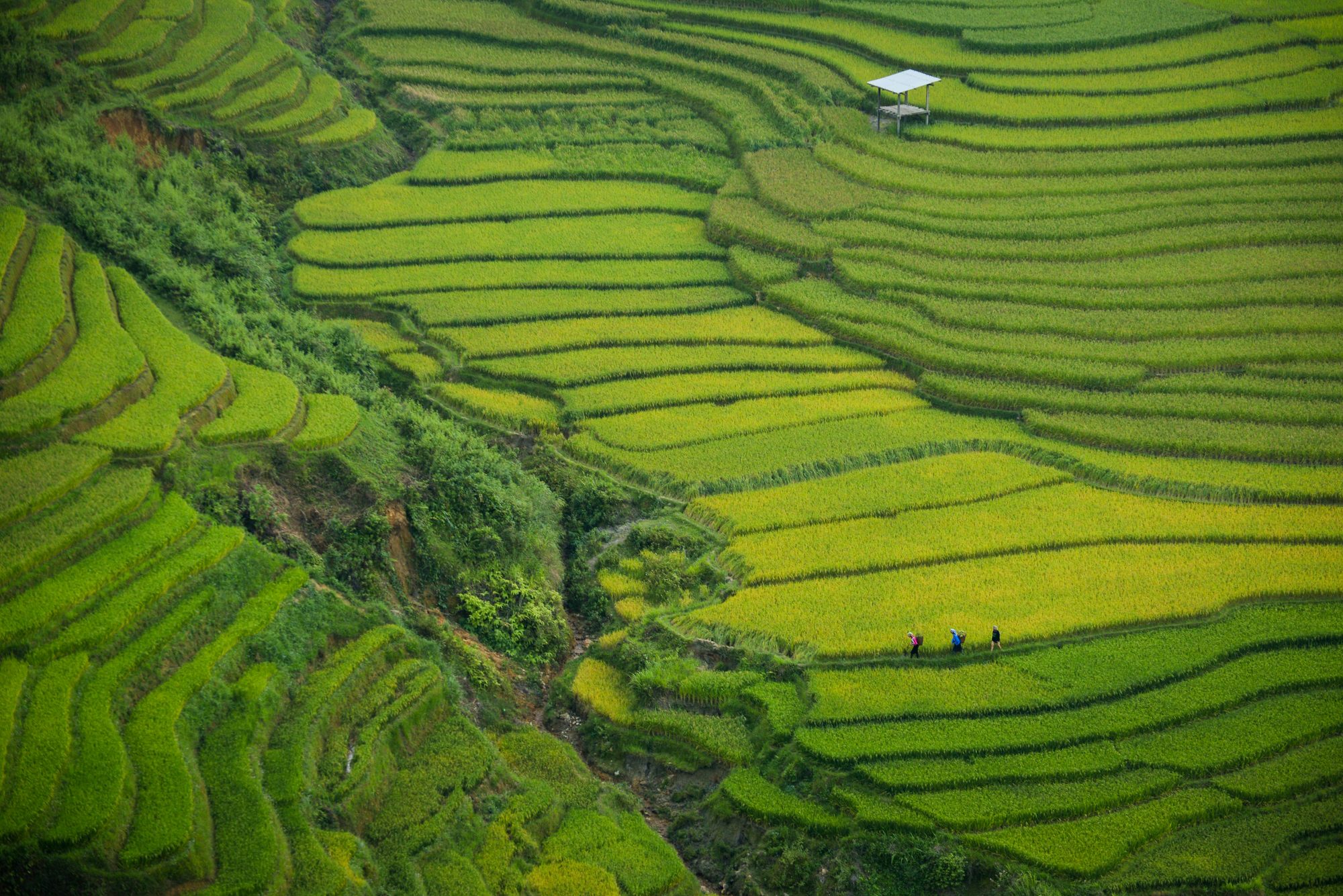About
The Fraser River played a critical role in the history of British Columbia. It was the site of the gold discoveries in the 1850s that led to the creation of the province, and became a transportation corridor to the rest of Canada. Steamboats could travel as far as Yale, a gold camp downstream from this point, and then a set of precarious roads continued upstream to the Cariboo gold fields. These roads were largely obliterated when the Canadian Pacific Railroad was built through the canyon in the 1880s.
This is the “second Alexandra Bridge,” which replaced an earlier version that had been closed in 1912 for safety reasons. Completed in 1926, it lay on the Fraser Canyon Highway, which was officially re-opened in 1927. The rise of automotive travel by the 1920s had led to pressure for a new highway through Fraser Canyon.
This Alexandra bridge was decommissioned in 1964, being replaced by the new Alexandra (arch) Bridge on the Trans-Canada Highway, which became the new automobile route up Fraser Canyon. The old Alexandra Bridge has been recognized as a Provincial Heritage Site and is open to non-motorized traffic. It is undergoing limited renovation for safety reasons that preserves the historic flavor.
The bridge was named after Princess Alexandra of Denmark, who married Prince Albert Edward in 1863 (long before he became King Edward VII in 1901).
Related Tags
Know Before You Go
The bridge is accessed from the Alexandra Bridge Park, which is on the west side of the Trans-Canada highway about 2 kilometers north of Spuzzum. There is a parking area with vault toilets. The access trail goes down an old highway and crosses the active Canadian National line. Use extreme caution when crossing these tracks.
The bridge deck consists of an open steel grate, which some may find psychologically difficult. It also may be difficult for pets to walk on.
Community Contributors
Added By
Published
March 11, 2025
